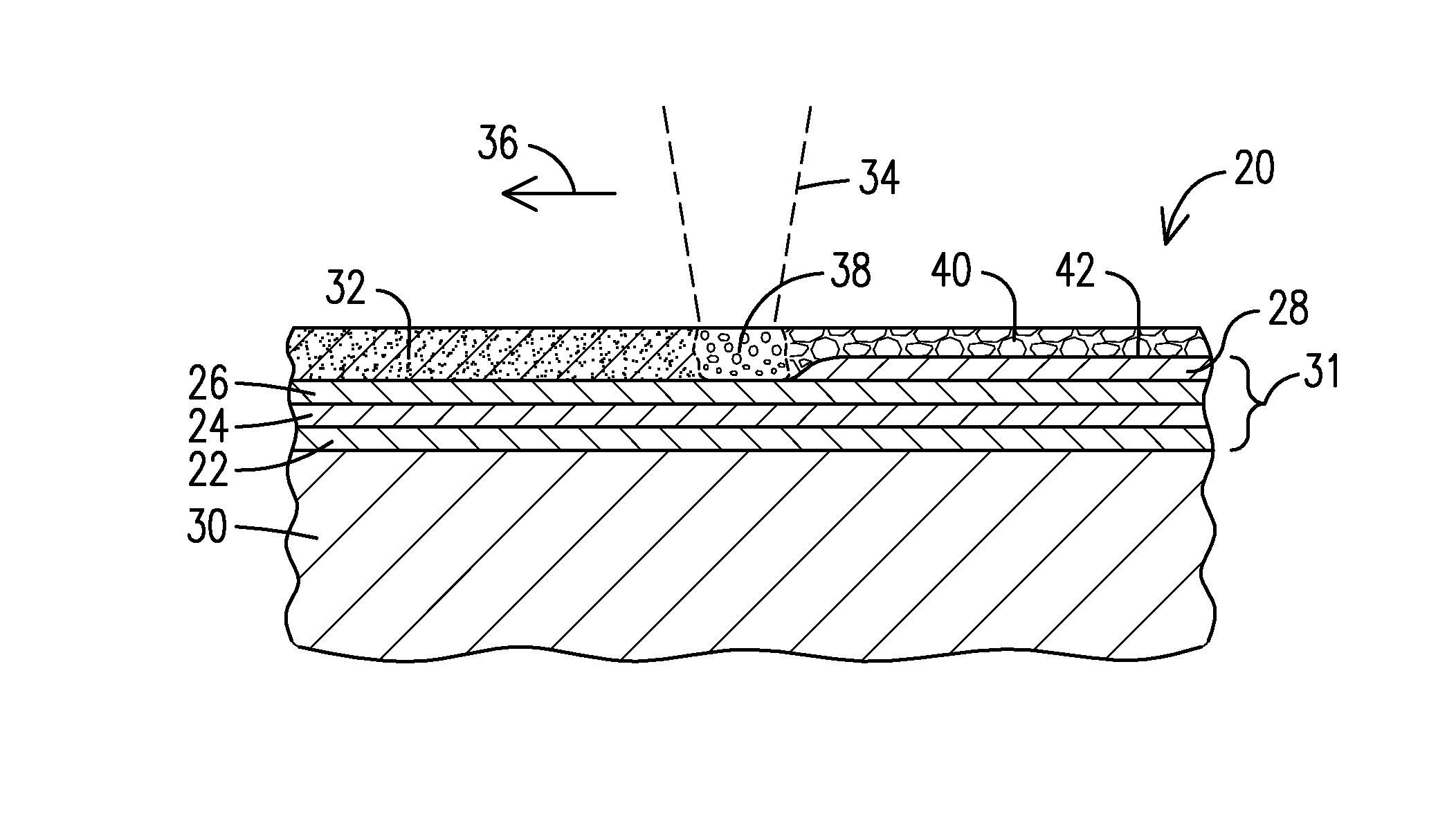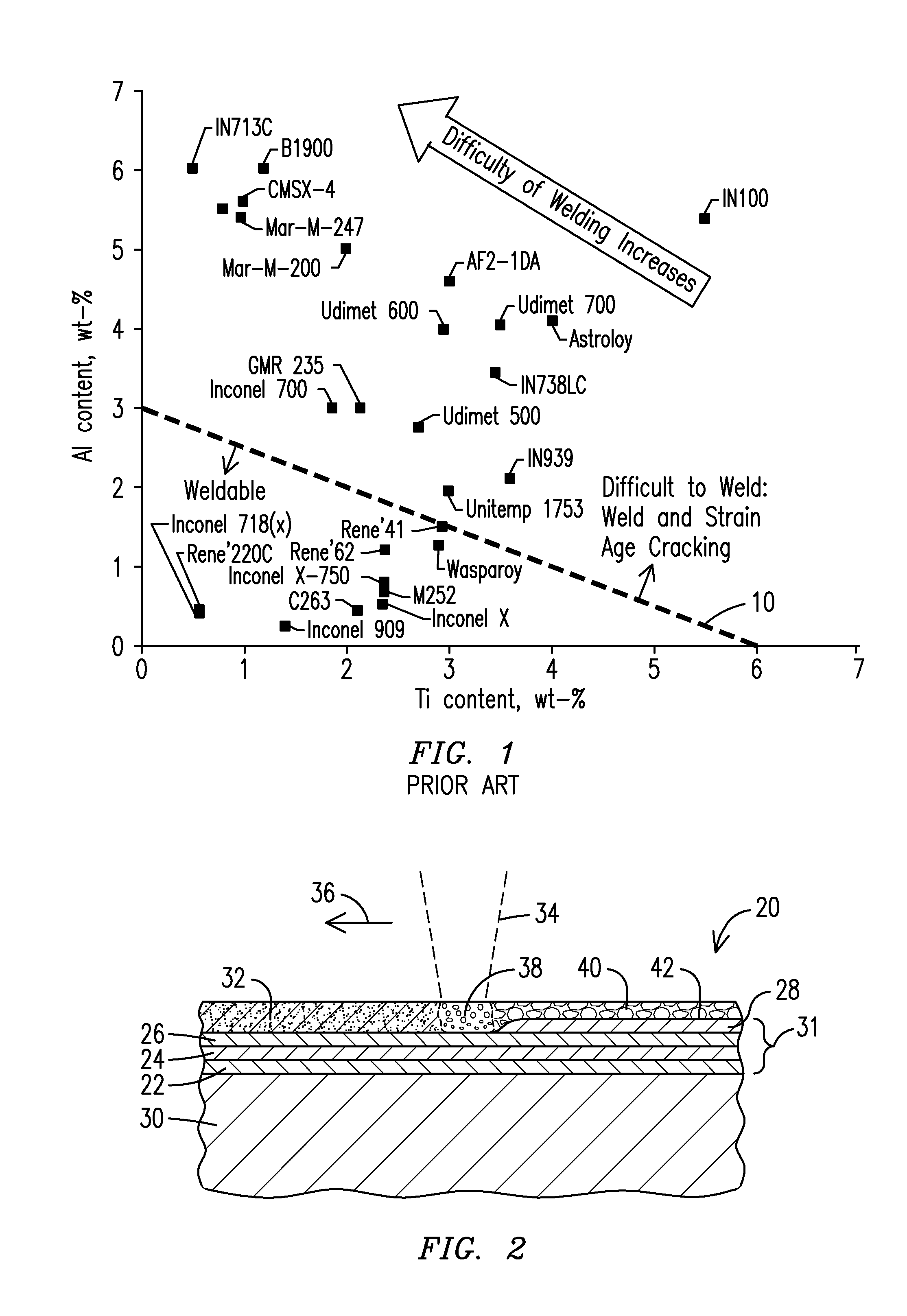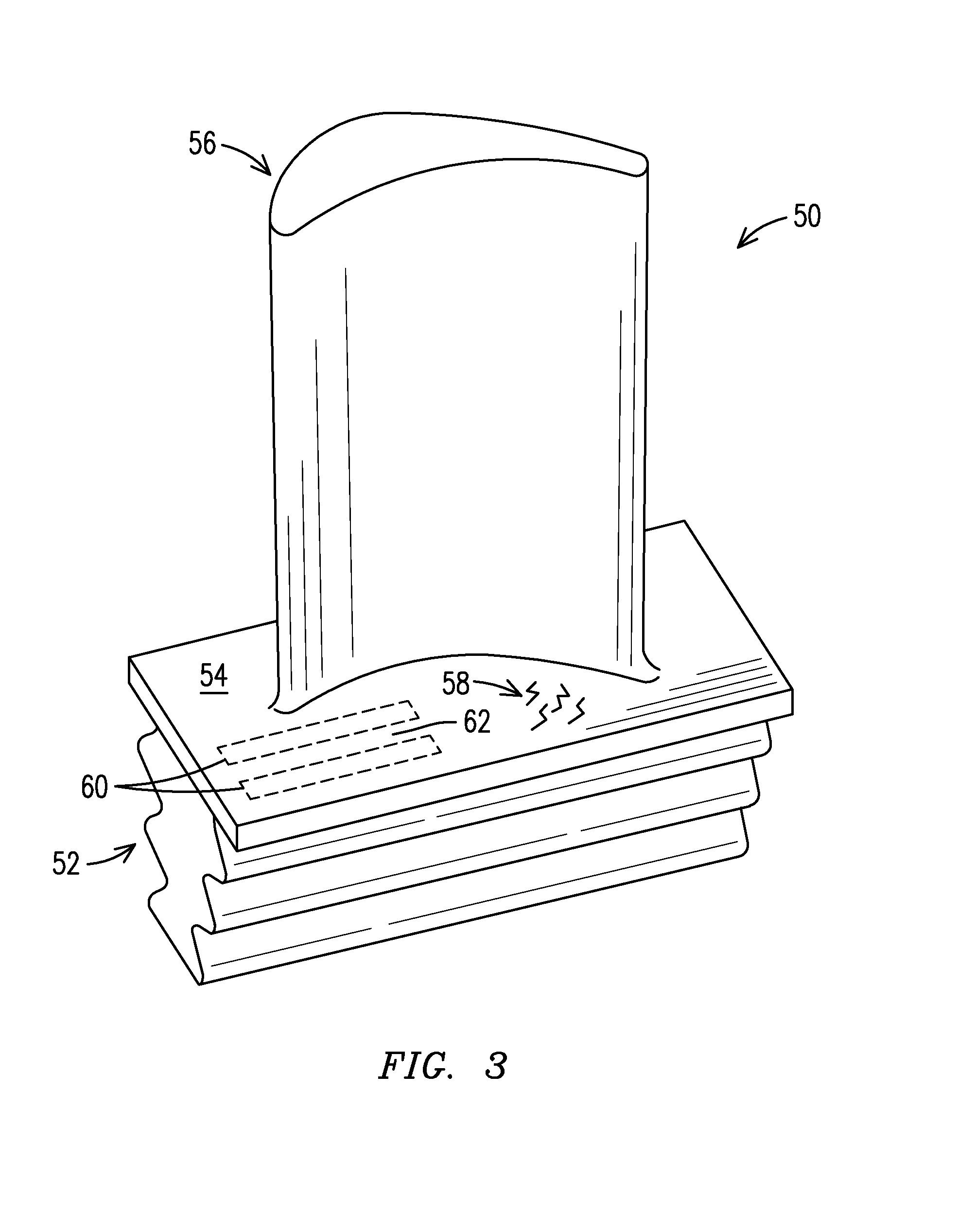Functional based repair of superalloy components
a superalloy and functional technology, applied in the field of materials technologies, can solve the problems of difficult welding, limited application of micro-cladding, and limited application of these processes to horizontal surfaces
- Summary
- Abstract
- Description
- Claims
- Application Information
AI Technical Summary
Benefits of technology
Problems solved by technology
Method used
Image
Examples
Embodiment Construction
[0011]The repair of service-run superalloy gas turbine components has traditionally been restricted by the difficulty of weld repair of high alloy materials. United States Patent Application Publication No. US 2013 / 0136868 A1, incorporated by reference herein, discloses improved methods for depositing superalloy materials that are otherwise difficult to weld. Those methods include the laser melting of powdered superalloy material together with powdered flux material to form a melt pool under a layer of protective slag. The slag performs a cleaning function in addition to protecting the molten alloy material from the atmosphere. Upon solidification, the slag is removed from the newly deposited superalloy material to reveal a crack-free surface. Such methods have been shown to be effective even for superalloy materials which are beyond the traditional zone of weldability shown in FIG. 1
[0012]The present inventors now extend the capability described in United States Patent Application ...
PUM
| Property | Measurement | Unit |
|---|---|---|
| thickness | aaaaa | aaaaa |
| composition | aaaaa | aaaaa |
| porosity | aaaaa | aaaaa |
Abstract
Description
Claims
Application Information
 Login to View More
Login to View More - R&D
- Intellectual Property
- Life Sciences
- Materials
- Tech Scout
- Unparalleled Data Quality
- Higher Quality Content
- 60% Fewer Hallucinations
Browse by: Latest US Patents, China's latest patents, Technical Efficacy Thesaurus, Application Domain, Technology Topic, Popular Technical Reports.
© 2025 PatSnap. All rights reserved.Legal|Privacy policy|Modern Slavery Act Transparency Statement|Sitemap|About US| Contact US: help@patsnap.com



